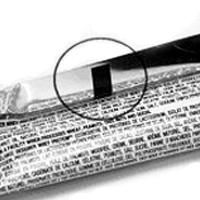
We recommend using durable, weatherproof materials like vinyl and polyester films since they can withstand freezing to hot temperatures (-50 to 200 degrees) and other elements like sun, chemicals, and abrasion. For further protection, don’t forget to include a durable laminate for outdoor use.
Using fade-resistant inks for outdoor applications instead of regular water-based inks will help increase the lifespan of the label because it has higher grade pigments that will fade less in sun exposure.

Yes, you can send us something to color match like a previous label, bottle, printed box, etc. Between our pre-press art department and press operators, we can get an exact or very close match. We can recreate and match colors through one of these two printing processes: four color process printing or spot color printing.

When a customer needs an exact color match for labels, we use “spot colors” to achieve the desired effect since they’re able to reproduce colors that are outside the gamut of ‘4 color process’ colors (CMYK = cyan, magenta, yellow, and ‘key’ black). To create spot color inks, we use the Pantone® Matching System (PMS), a standardized color reproduction system. If you don’t have your PMS color, you can research online using the Pantone color finder.

Assuming that your scanner isn’t broken, there are several possible reasons why the UPC barcode on your labels isn’t scanning: the size, resolution, or color contrast of the barcode.

Flexographic printing is a popular method for printing large orders of custom labels at rapid speeds by transferring ink onto the paper or film material using flexible printing plates mounted on fast-rotating cylinders. Flexographic printing plates allow customization options that aren’t possible with some other types of presses.

If you have a mail merge, list of barcode numbers, or some other type of variable data, you should use spreadsheet or database software to create your variable data file.

We use water-based and UV curable inks for most of our customers since they offer great print quality and are less harmful to the environment than solvent inks. Water-based inks are our go-to choice as they’re less expensive and work on a variety of paper and film materials. UV inks, however, offer several benefits. UV inks are a more specialized type of ink that is cured by an ultraviolet lamp which turns them from a liquid into solid – this process is much faster than air drying other types of inks.

Direct thermal printing is a specialized printing technology that uses rapidly heated pins that selectively activate a heat sensitive coating applied to the facestock thus forming the desired image. Thermal transfer is thermal printing process using a temperature sensitive ribbon that through heat and pressure is selectively transferred to a printable surface thus creating the desired image. The ink is transferred from the ribbon to the print surface thus the term “thermal transfer.”

An ‘eye mark’ (also known as ‘eye spot’) is a small rectangular printed area located near the edge of the printed flexible packaging material. A sensor on the form-fill-seal (FFS) machine reads the eye mark to identify packaging material, control the material’s position, and coordinate the separation and cutting of the flexible packaging material.

To ensure quality labels, we recommend following our design requirements for label printing and using the appropriate design software. You can download our specs sheet to keep or give to your label designer.

The colors on your labels can look different from your design for several reasons. Differences in how computer monitors and printers render color mean the label colors you see on your screen may not match the printed labels.